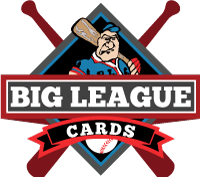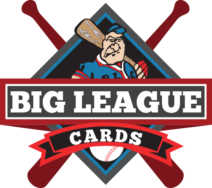Inside the Pack: Changes I’d Like to See Fanatics Make
Last week I talked about all the changes that Fanatics is likely to bring to the structure of the sports card industry as a whole. From in-house grading to a consumer marketplace, the new company is promising investors a host of innovations to bring card collecting fully into the 21st century. What’s been noticeably absent, however, is any plan as to what types of products they’ll produce. To date, Fanatics has filed only two known trademark applications for trading cards, a small number for a company that could make cards as soon as 2023. Whether or not Fanatics purchases an existing card company, I have a list of things I’d like to see from them once they do begin production on cards.
Reign in the number of parallels and insert sets. Topps and Panini have both let the number of parallel cards spin so far out of control that it’s sometimes nearly impossible to tell them apart, like pink and magenta refractors. Certain sets have so many inserts that it’s impossible to ever put together an insert set, which are sometimes the best part of a product. I recently opened six loose packs of my favorite product of all time, 2005 Topps Rookie Cup. I was reminded of what opening cards was like just a decade and a half ago: I opened six packs totaling 30 cards and didn’t get a single parallel or insert card. When I checked the odds on the back of the pack I found that the easiest parallel to obtain came 1 in 21 packs. That makes it exciting when you do hit one!
Offer low-end products for kids. Topps Big League, like its predecessor Topps Bunt, typically aims to fill this void. But Big League still has rare parallels and autographs of stars that make it a worthwhile gamble for flippers at the low price point, which then drives up the price to a point where it’s no longer a product for kids anymore. Panini Triple Play product of yesteryear did a much better job in this regard as there wasn’t a whole lot of excitement in it, though it perhaps went too far the other way. A product with a few nice parallels and really, really tough autos to pull would be perfect for kids and nascent collectors.
Focus on underrepresented groups. Young Latino superstars like Ronald Acuña Jr., Fernando Tatis Jr., and Vladimir Guerrero Jr. are becoming the faces of baseball, yet not since the Pacific brands of the late 1990s and early 2000s has there been a product with Spanish translations or, in some cases, primarily in Spanish with English translations. Negro League pioneers appear few and far between despite the fact that the Negro Leagues are now recognized as a Major League. Female trailblazers rarely show up in products. As baseball expands its reach, new products should widen their lens and appeal to all cross-sections of baseball fans.
Kill the relic card. Once upon a time, pulling a relic card was exciting. It was something new and brought you a step closer to the game. Nowadays, no one cares about basic single color relics, while multi-color patches only do moderately better if they are “player-worn” rather than game-used. I’d rather see relic cards replaced with something exciting and new, like a redemption code for an exclusive NFT. With Fanatics branching out into seemingly every corner of the market, perhaps instead of relic cards a collector could receive a fractional share of an actual relic, like a whole game-worn jersey or game-used bat, which could then be traded on a secondary market. Relic cards are so 1990s; let’s leave them behind.




